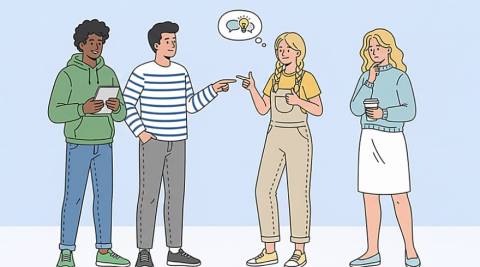Take Control of Your Conversations With the Communication Style Test

Definition, Purpose, and Strategic Value
Organizations thrive when clarity, empathy, and timing shape every exchange. Beyond informal observation, decision makers benefit from data that reveals how messages land, where friction originates, and which habits amplify trust. Beyond informal feedback, standardized diagnostics like the communication test create a shared baseline for improvement across teams. With a consistent benchmark in place, coaches and managers can target growth areas without guesswork, while participants gain language to describe their patterns with precision.
Reliable evaluation does more than score performance; it illuminates context. When leaders seek pattern visibility, a communication styles test highlights how preferences surface under pressure and pace. That insight connects day‑to‑day behaviors tone, cadence, and choice of medium to measurable outcomes such as cycle time, customer satisfaction, and engagement. In practice, assessments add accountability to soft skills by providing concrete artifacts, such as individualized reports, that inform development plans and coaching roadmaps.
Strategically, an assessment program supports onboarding, succession, and culture-building. New hires integrate faster when they understand how colleagues prefer to receive updates, make decisions, and resolve conflict. Seasoned professionals can recalibrate after role changes, while cross-functional teams adopt shared norms that shorten feedback loops. Because communication underpins every workflow, the return on clarity compounds across negotiations, product reviews, retrospectives, and executive briefings, creating durable competitive advantage.
Mechanics, Dimensions, and Scoring
Effective instruments balance scientific rigor with practical interpretation so results are both accurate and actionable. In well-constructed surveys, question banks probe multiple dimensions such as assertiveness, adaptability, listening depth, message structuring, and channel selection. For individuals who want a comprehensive snapshot, a communication assessment test organizes these dimensions into scales, percentile ranks, and narrative insights that link patterns to concrete behaviors. High-quality reports also include situational tips, enabling immediate application during meetings and written exchanges.
| Dimension | What It Reveals | Example Probe |
|---|---|---|
| Clarity | Precision of wording and logical flow | How often do you outline conclusions before details? |
| Listening | Depth of attention and paraphrasing skill | Do you summarize the other person’s point before replying? |
| Adaptability | Flexibility across audiences and settings | How quickly do you adjust tone when stakes change? |
| Assertiveness | Comfort making requests and setting boundaries | When deadlines slip, do you state trade‑offs explicitly? |
| Medium Choice | Fit between channel and message complexity | Do you switch from chat to a call when nuance is high? |
Measurement is only the first step; translation into routines drives value. After reviewing scale scores, practitioners map strengths to real scenarios like stakeholder updates or incident postmortems. For capability benchmarking and hiring screens, a communication skills test can complement interviews by simulating tasks such as summarizing complex inputs or drafting corrective memos with tone-aware language. Done well, this leads to targeted practice plans that improve outcomes without overwhelming the participant.
Frameworks: Colors, DiSC, and Hybrid Models
Different models package insights in different ways, and choosing the right lens accelerates adoption. Many teams prefer memorable metaphors that make preferences easy to recall during fast-moving work. For leaders who like visual cues, a communication style color test maps tendencies to palettes that symbolize energy, pace, and focus, aiding quick self-reminders in meetings and cross‑functional reviews. The color shorthand becomes a shared language that reduces misinterpretation across departments.
Other organizations rely on trait-based frameworks that translate into practical tactics. Implementation is smoother when labels are simple, consistent, and tied to behaviors rather than fixed identities. In large enterprises, the disc communication styles test is often used to align collaboration norms, giving participants a structured way to anticipate how teammates will approach decisions, debate, and feedback during time‑sensitive projects. This predictability lowers friction while preserving healthy dissent.
Color-based models continue to evolve, blending neuroscience, behavioral economics, and narrative techniques to deepen relevance. Facilitators encourage teams to treat outputs as hypotheses to be tested in real interactions, not as rigid boxes. When executives want a fast, memorable primer, a communication color test distills insights into accessible labels that can be revisited before high‑stakes conversations, offsites, and client workshops for quick priming and alignment.
Self-Awareness, Team Dynamics, and Relationship Contexts
Personal insight is only half the equation; the other half is the interplay between different preferences. Teams that normalize discussion about pace, detail, and feedback timing reduce rework and elevate trust. For partners navigating intimacy and decision-making, a communication test for couples fosters a shared vocabulary that turns recurring conflicts into solvable patterns with agreed-upon rituals and boundaries. The outcome is less mind-reading and more deliberate collaboration at home.
Identity, motivation, and stress responses shape how messages are sent and received. Feedback lands differently when it accounts for values, triggers, and processing styles accumulated over a lifetime. When individuals want to connect style with temperament, a personality communication test bridges inner drivers with outward expression so growth plans address root causes rather than surface habits. That integrated view prevents one-size-fits-all advice and respects human complexity.
Group rituals transform insight into results. Leaders can codify norms for updates, escalation paths, and retrospective formats to ensure equitable airtime and clear expectations. When programs scale across departments, curated sets of communication style tests help organizations choose the right instrument for recruiting, coaching, and leadership pipelines without duplicating effort or confusing stakeholders. Consistency builds momentum and makes wins repeatable across contexts.
Preparation, Practice, and Implementation
Preparation enhances both accuracy and usefulness, especially when participants know how results will be applied. Before completing any survey, it helps to gather examples of recent conversations that went well, plus moments that missed the mark, to anchor reflection with specifics. For learners who want precise guidance, a communication style test becomes more valuable when it is paired with role‑plays, shadowing, and micro‑habits that are tracked over weeks for measurable progress. Consistent iteration beats one‑off workshops.
Ongoing reinforcement turns insight into muscle memory through deliberate repetition. Teams can calendar brief drills summaries, reframes, or meeting kickoffs that build shared rhythms without heavy overhead. In technical teams, engineers often run a test communication step before launches to align protocols, responsibilities, and escalation criteria. By embedding practice into existing ceremonies, organizations create durable habits that keep projects moving and relationships strong even under pressure.
FAQ: Practical Answers for Everyday Scenarios
How should someone get ready to take an assessment?
Set aside focused time, silence notifications, and reflect on recent conversations across different contexts one-on-ones, group meetings, and written updates. Consider what energized you, what drained you, and which outcomes surprised you. Gathering concrete examples helps you answer consistently and makes the resulting report actionable during coaching sessions and performance planning.
Can results change over time or are they fixed?
Scores can shift with role demands, stress, training, and deliberate practice. Core tendencies often remain stable, yet situational behaviors adapt as you gain tools and awareness. Retesting after a developmental sprint or a major career transition can validate progress and reveal new focus areas for the next cycle of growth.
What’s the best way to apply findings on the job?
Translate insights into tiny routines: open with outcomes, ask clarifying questions, paraphrase before proposing, match channel to complexity, and end with next steps. Share your preferences with colleagues and invite theirs in return. Codify norms on team pages, and revisit them during retrospectives to capture wins and refine workflows.
Are these tools suitable for remote and hybrid teams?
Yes, distributed teams benefit immensely because misalignment multiplies across channels. Use results to pick the right medium for each message, agree on response windows, and set escalation rules. Add quick check-ins to calibrate tone, and favor visuals or summaries when information density is high and attention is fragmented.
How do leaders use assessment data ethically?
Leaders should treat results as developmental aids, not labels or gatekeepers. Obtain consent, limit access to those who support growth, and contextualize findings with qualitative feedback. Combine insights with clear expectations, coaching, and fair opportunities so people can experiment safely and demonstrate progress over time.
Latest News



